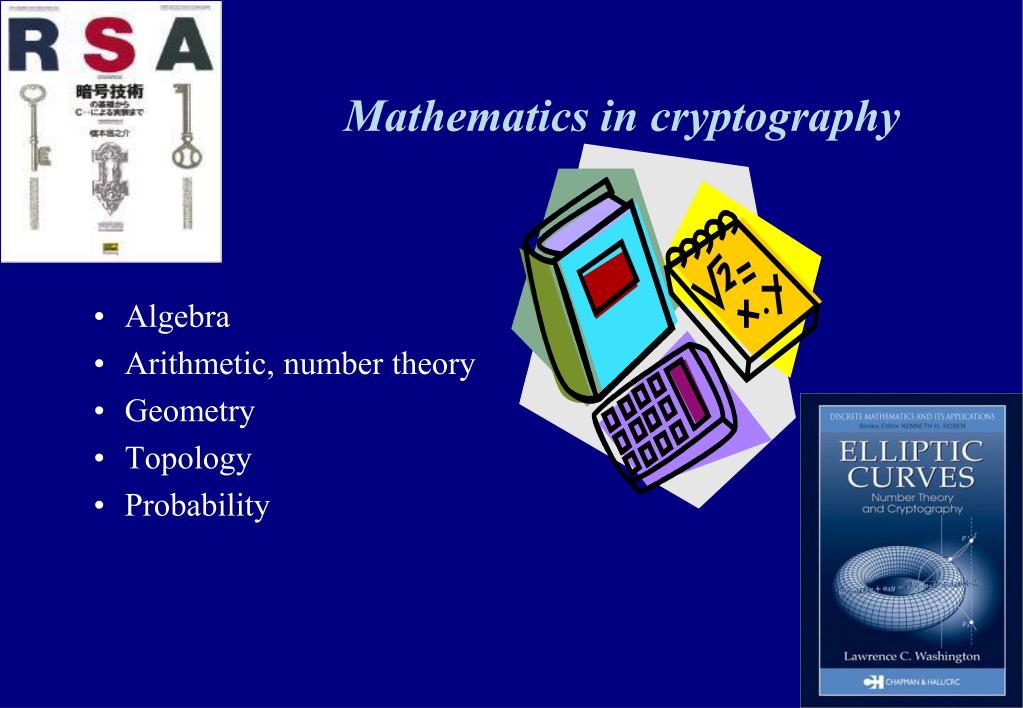Cryptography is a profound and intricate field that relies heavily on various branches of mathematics. The intersection of mathematics and cryptography is not merely coincidental; it is foundational. Understanding how cryptography utilizes mathematics helps elucidate the mechanisms behind secure communications, data integrity, and authentication. This exploration will dissect the mathematical underpinnings of cryptography, emphasizing its various forms and methodologies.
The genesis of cryptographic techniques can be traced back to ancient civilizations that employed rudimentary ciphers to safeguard messages. However, the complexity of modern cryptography has escalated, embracing advanced mathematical concepts. There are several pivotal areas of mathematics that contribute to cryptography: number theory, algebra, probability, and information theory, among others. The synthesis of these disciplines creates sophisticated algorithms that protect digital information.
One of the most significant branches of mathematics in cryptography is number theory. This area focuses on the properties and relationships of numbers, particularly integers. Key concepts such as prime numbers, modular arithmetic, and the Euclidean algorithm are fundamental in developing cryptographic algorithms. For example, the RSA (Rivest-Shamir-Adleman) algorithm is predicated on the computational difficulty of factoring large composite numbers, which consist of the product of two prime numbers. The security of RSA is derived from the assumption that, while it is easy to multiply two large primes, it is exceedingly challenging to reverse the process and discover the original primes from the product.
Another prominent mathematical principle in cryptography is algebra. Groups, rings, and fields form the backbone of numerous cryptographic protocols. Public key cryptography heavily relies on algebraic structures, wherein two keys—public and private—are generated through mathematical functions. The Diffie-Hellman key exchange, for instance, utilizes the properties of modular exponentiation in group theory to facilitate secure key exchanges over unsecured channels. This method allows two parties to generate a shared secret without transmitting it explicitly.
Probability plays an integral role in cryptographic security, particularly in analyzing the strength and effectiveness of cryptographic algorithms. Statistical analysis is employed to assess the randomness of key generation processes and the resilience of cryptographic schemes to various attacks. Understanding probabilistic methods enables cryptographers to quantify vulnerabilities and fortify systems against potential breaches. Moreover, the concept of entropy—often measured in bits—factors prominently into cryptographic practices. High entropy indicates greater unpredictability in cryptographic keys, making systems more resistant to brute-force attacks.
Information theory, another essential mathematical discipline, deals with quantifying information and managing communication systems. It encompasses concepts such as entropy and redundancy, which are crucial for analyzing and designing secure communication systems. The landmark work of Claude Shannon laid the groundwork for modern cryptography by introducing the notion of confusion and diffusion—principles that enhance the complexity of cipher algorithms. Shannon’s theories assert that a secure cipher must obscure the relationship between the plaintext and the ciphertext, thereby preventing unauthorized access to the original message.
Various cryptographic methods exemplify the application of mathematical principles. Symmetric-key cryptography, where both sender and recipient share a common key, uses algorithms like the Advanced Encryption Standard (AES). AES employs complex mathematical transformations based primarily on finite field arithmetic. Its structure consists of a series of permutations and substitutions designed to obfuscate data robustly, making decryption without the key computationally infeasible.
Conversely, asymmetric-key cryptography employs pairs of keys, as seen in protocols like RSA and elliptic curve cryptography (ECC). ECC offers advantages over classical systems through the use of elliptic curves over finite fields. The difficulty of solving the elliptic curve discrete logarithm problem underpins the security of these systems, requiring advanced algebraic and number-theoretical insights for both implementation and cryptanalysis.
Cryptographic hash functions, another vital element in this framework, transform input data into fixed-size hash outputs via complex mathematical operations. Functions such as SHA-256 (Secure Hash Algorithm) are designed to be irreversible, ensuring that even small changes in input produce significantly different outputs. This property is crucial for integrity verification in digital signatures and blockchain technology.
In addition to these theoretical foundations, practical aspects of cryptography also rely on the mathematical concepts of security protocols, digital signatures, and certificate authorities. The objective remains consistent: to preclude unauthorized access to sensitive information through sophisticated mathematical mechanisms that underpin each layer of security.
The field of cryptography exemplifies a marriage between mathematics and practical technology, crafting seamless solutions for securing information in an increasingly digital world. It is vital for professionals in this domain to remain vigilant and informed about emerging threats, advancements in algorithms, and quantum computing’s potential implications on traditional cryptographic methods.
In conclusion, the relationship between cryptography and mathematics is intricate and multi-faceted. By employing a myriad of mathematical principles—from number theory and algebra to probability and information theory—cryptographers create secure communication mechanisms that safeguard our digital infrastructure. As technology continues to evolve, the mathematical foundations of cryptography will remain pivotal in securing an ever-expanding digital landscape.








Leave a Comment